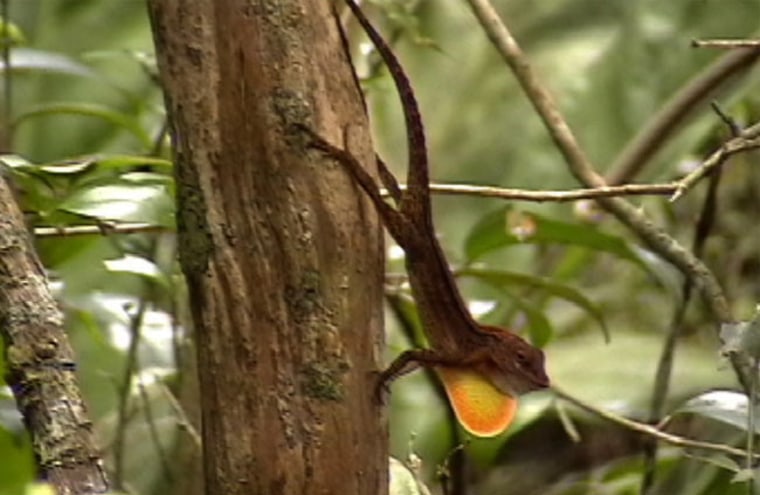Like dancers in a crowded nightclub, some lizards ramp up their body movements to be seen above the background chaos in order to better defend their turf.
Scientists have shown how animal species such as birds, monkeys and frogs alter their acoustic signals to stand out against a noisy backdrop.
A new study broadens this phenomenon to organisms that communicate visually, said lead scientist Terry Ord of the University of California at Davis.
To advertise ownership of territory, a male anole lizard bobs its head, extends a colorful throat pouch and sweeps its tail up and down in an arc. The lizard can spot a rival lizard up to 80 feet away.
The lizards’ signals need to be prominent enough for a rival to see, but not showy enough to draw attention from a passing predator. Adding another nuance, their forest home can compete with the displays and even visually drown them out on a particularly windy or rainy day.
"They have to have a strategy to get their message across," Ord said.
Ord and his colleagues took digital video of two species of anole lizards, Anolis cristatellus and Anolis gundlachi, in the Caribbean National Forest in Puerto Rico. They recorded each lizard for an average of 28 minutes. Later, the scientists calculated the maximum speed for each video frame to come up with average head-bob and background-vegetation speeds.
Males stuck amid a bustling background bobbed and arched in hyperactive mode, while on a calm day the displays were less active. The males actually adjusted, in real-time, the speed of their body movements based on the level of background visual “noise.”
Ord hopes to trace the evolution of lizard signals by studying a variety of anole lizard species living on islands of the Caribbean. While the species are separated by up to 30 million years of evolution, they live in similar environments with the same natural obstacles to communication.
The research is detailed in the current online edition of the Proceedings of the Royal Society B.
